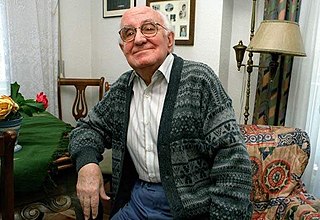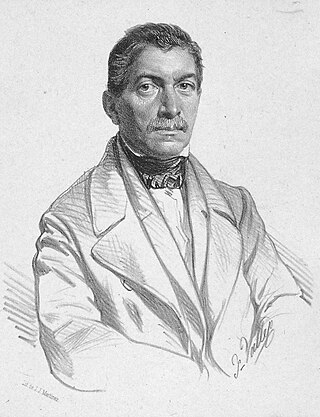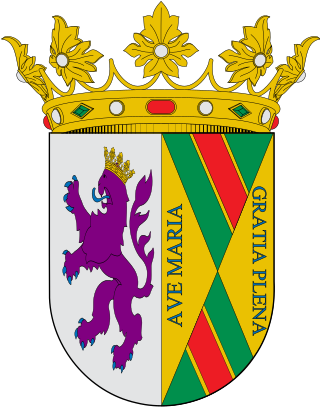Pharmacotherapy, also known as pharmacological therapy or drug therapy, is defined as medical treatment that utilizes one or more pharmaceutical drugs to improve on-going symptoms, treat the underlying condition, or act as a prevention for other diseases (prophylaxis).
Pharmaceutical care is the direct, responsible provision of medication-related care for the purpose of achieving definite outcomes that improve a patient’s quality of life.
In medicine, referral is the transfer of care for a patient from one clinician or clinic to another by request.
Mexican immigration to Spain refers to the Mexican population in Spain and their Spanish-born descendants. The Mexicans living in Spain are composed primarily of students, skilled professionals, spouses of Spaniards, as well as Mexican citizens who also have Spanish nationality. In December 2008, the National Statistics Institute in Spain had 14,399 registered Mexicans within its territory, of which 7,210 hold other nationalities of the European Union or are family members of EU citizens. To this number must be added those with dual nationality, who are not in Spanish records as foreigners. Mexican and Spanish laws allow dual citizenship, and many Mexicans who have asked for it, whether they are residents in Spain as grandchildren or they are children of Spanish migrants to Mexico. In 2010, the Ministry of Foreign Affairs of Mexico recorded 21,107 Mexicans living in Spain, who became the third largest Mexican community residing abroad, after the United States and Canada; and the largest Mexican community in Europe. However, they are the least numerous Latin community in Spain.

The Spanish National Health System is the agglomeration of public healthcare services that has existed in Spain since it was established through and structured by the Ley General de Sanidad of 1986. Management of these services has been progressively transferred to the distinct autonomous communities of Spain, while some continue to be operated by the National Institute of Health Management, part of the Ministry of Health and Social Policy. The activity of these services is harmonized by the Interterritorial Council of the Spanish National Health Service in order to give cohesion to the system and to guarantee the rights of citizens throughout Spain.

The Spanish Medical Colleges Organization is a Spanish organization whose purpose is to regulate the Spanish medical profession. The organization comprises the General Council of Official Medical Colleges and the Spanish regional medical colleges. Its role is to represent all the registered doctors, ensuring proper standards and promoting an ethical medical practice.

Luis Barbero Fernández was a Spanish actor. He appeared in more than 150 films and television shows between 1957 and 2001. In 2000, he was awarded with a Lifetime Achievement Award from the Spanish Actors Union. He died of a heart attack in 2005.

Barbara Starfield was an American pediatrician. She was an advocate for primary health care worldwide. Her academic and professional life was almost fully dedicated to the Johns Hopkins University.

Miguel de Cervantes Health Care Centre is a health centre located at Alcalá de Henares, Madrid, Spain, which belongs to the Health Service of Madrid and is assigned to direct public health care.
Miquel Orobitg Guitart is a Spanish disability shooter who has represented Spain at the 1996, 2000, 2004, 2008, and 2012 Summer Paralympics.

Embajadores is an administrative neighborhood (barrio) of Madrid, belonging to the Centro District.
This is a list of mayors of Medellín, Colombia.
The Spanish Royal Statute of 1834 established a bicameral legislature (Cortes) consisting of an upper chamber of unelected nobles and a lower chamber of elected representatives. The first session was opened on 24 July 1834 and closed on 29 May 1835.

Fermín Caballero y Morgáez was a Spanish geographer, journalist, writer, and liberal politician.

Jorge Soler González is a medical doctor, teacher, writer and Spanish politician. He is a deputy for Ciudadanos, elected to the Parliament of Catalonia for the 11th and 12th legislatures.
María Elisa Álvarez Obaya was a Spanish pharmacist known for identifying the origin of a mass poisoning case.

Austral University Hospital is a health care, teaching and biomedical research institution. Its central facilities also house Austral University’s School of Biomedical Sciences. It also has five sites: the outpatient clinics located at Paseo Champagnat, San Miguel, Luján and Escobar, and the Officia Specialty Centre.

Duke of Pastrana is a hereditary title in the Peerage of Spain, accompanied by the dignity of Grandee and granted in 1572 by Philip II to Ruy Gómez de Silva, 1st Prince of Éboli, 1st Duke of Estremera and one of the king's advisors.
The 136th Mixed Brigade was a unit of the Spanish Republican Army that took part in the Spanish Civil War. Throughout the war, it was assigned to the Guadalajara front, without having a relevant role.
La Violeta was a Spanish language weekly women's magazine with a focus on fashion and literature based in Madrid, Spain. Its subtitle was Revista hispano-americana de literatura, ciencias, teatros y modas. The magazine was in circulation in the period 1862–1866, and had significant contributions to the education of women in the country.










